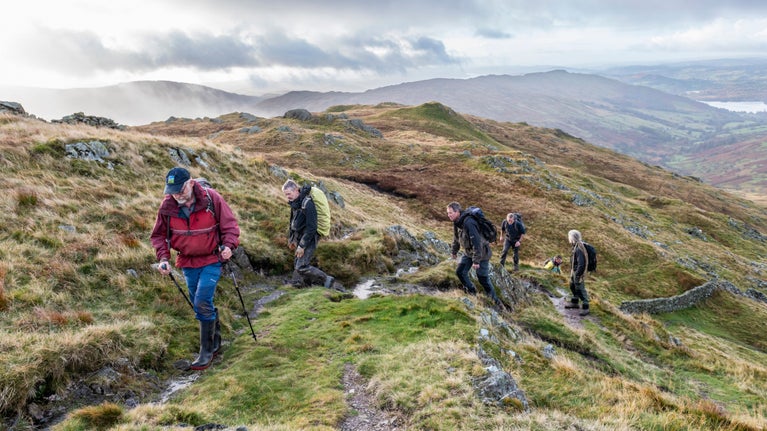
Give back to the places you love
Whether you choose to fundraise, donate or volunteer, there are lots of meaningful ways to help look after the places in our care for future generations.

We've been looking at how to balance conserving the places in our care and offering as many people as possible a chance to experience nature, beauty and history.
At the 2021 AGM, there was a discussion and resolution about overcrowding. It led to a conversation about how we maintain the right balance between taking care of historic places and making sure people can visit and enjoy them.
We know that some of our pay-for-entry places get busy at certain times. Equally, when we survey members and visitors they don't raise overcrowding as being a major issue for them. We’ve established systems for managing visitor numbers in these places, for example by using a booking or timed system, but we’re aware that not everyone likes to book to visit.
We also know that some of the coast and countryside places we care for have become extremely busy, although this is not as severe as it was during the peak of the pandemic.
Opening places to visitors in a way that respects conservation is a very important part of what we do. We need a different approach for pay-for-entry places, where to a large degree we can manage numbers of visitors, and our coast and countryside, where changes can be complex and often involve partners.

We have around 300 houses and gardens where we can control how many people visit at one time. Here's what we're doing at these places:

By far the largest number of National Trust visitors come to outdoor places, where we cannot control visitor volumes. Here we need a different approach:
Visitor volumes in 2022 haven't been at the peak levels reached in 2019 and 2020, so we have some time to respond. We want to maintain a dialogue with our members about how we use booking to manage demand in busier places. This may divide opinion, so we’ll test, listen and learn over the coming years.
We continue to expect growing visitor numbers in some places, especially in parkland and countryside areas near centres of population. The trend for outdoor recreation and refreshment is something that would have delighted one of our founders, Octavia Hill, and we want to respond to the challenges that it presents in a positive way.
Where we can, we’re looking to provide more and better green space near where people live, including our ambition to create 20 green corridors by 2030.
Lastly, changes in technology and our investment in new systems will allow us to communicate better with members and visitors about busy days and times. This means we can let members and supporters know when places are nearly full, so they can make alternative plans, if they wish.

Whether you choose to fundraise, donate or volunteer, there are lots of meaningful ways to help look after the places in our care for future generations.
Your Annual General Meeting (AGM) took place on Saturday 8 November 2025 at the STEAM Museum, Swindon.

Find answers to some of the most commonly asked questions about visiting and using the booking system.
